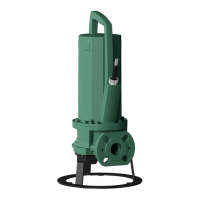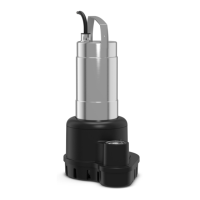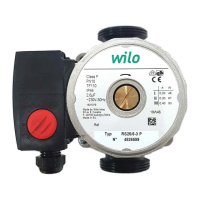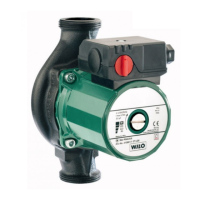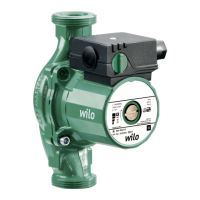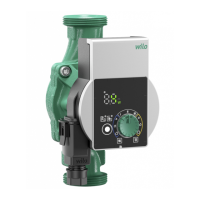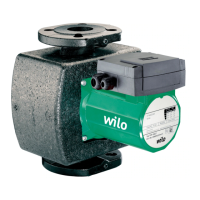en-US Maintenance and repair
24 WILO SE 2017-03
▪Visual inspection of the housing for wear
▪Function test of the monitoring devices
▪Oil change
9.4.2 Maintenance intervals for application in sewage lift-
ing units
When using the pump in sewage lifting units inside
buildings or on land plots, carry out the maintenance
intervals and measures according to DINEN12056-4!
9.4.3 Maintenance intervals under harsh conditions
Under harsh operating conditions, the specified main-
tenance intervals must be shortened, if necessary.
Harsh operating conditions include:
▪Fluids with long-stranded components
▪Turbulent intake (e.g. due to air intake, cavitation)
▪Very corrosive or abrasive fluids
▪Highly gaseous fluids
▪Operation at an unfavorable duty point
▪Pressure surges
If using the pump under harsh conditions, signing a
maintenance contract is recommended. Please contact
the customer service.
9.5 Maintenance measures
WARNING
Sharp edges on the impeller and suction port!
Sharp edges can form on the impeller and suction
port. There is a danger of limbs being cut off! Pro-
tective gloves must be worn against cutting injuries.
WARNING
Hand, foot or eye injuries due to the absence
of protective equipment!
During work there is a risk of (serious) injury. Wear
the following protective equipment:
• Safety gloves against cutting injuries
• Safety shoes
• Closed safety goggles
Before starting the maintenance measures the follow-
ing requirements must be fulfilled:
▪Pump cooled to ambient temperature.
▪Pump thoroughly cleaned and (if necessary) disin-
fected.
9.5.1 Recommended maintenance measures
For smooth operation, it is recommended to carry out
regular inspections of the current consumption and the
operating voltage in all three phases. In normal opera-
tion, these values remain constant. Slight fluctuations
may occur depending on the characteristics of the fluid.
Using the current consumption, damage or malfunc-
tions in the impeller, bearings, or motor can be identi-
fied at an early stage and rectified. Large voltage fluc-
tuations strain the motor winding and can cause the
pump to break down. Regular inspections can prevent
major secondary damage and reduce the risk of total
breakdown. With regard to regular inspections, the use
of remote monitoring is recommended.
9.5.2 Visual inspection of the power supply cable
The power supply cables must be checked for:
▪Bubbles
▪Cracks
▪Scratches
▪Chafe marks
▪Pinch points
If damage is detected on the power supply cable, the
pump must be immediately decommissioned! Cus-
tomer service must replace the damaged power supply
cable. The pump may only be started up again once the
damage has been properly remedied!
CAUTION!Due to damaged power supply cables, wa-
ter can penetrate into the pump! Water ingress
causes total breakdown of the pump.
9.5.3 Visual inspection of accessories
The accessories must be checked for:
▪Correct fixation
▪Proper function
▪Signs of wear
Identified deficiencies must be immediately repaired or
the accessories must be replaced.
9.5.4 Visual inspection of the housing for wear
The housing parts are not allowed to have any apparent
damage. If deficiencies are identified, consultation with
the customer service must take place!
9.5.5 Function test of the monitoring devices
To check the resistors the pump must be cooled down
to ambient temperature!
9.5.5.1 Checking resistor in the temperature sensor
Check resistor in the temperature sensor with an ohm-
meter. The bimetallic strip must have a measured value
of 0ohm (passage).
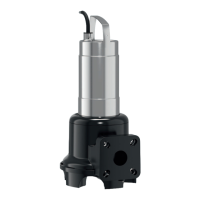
